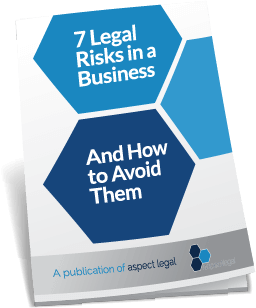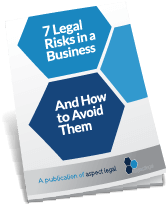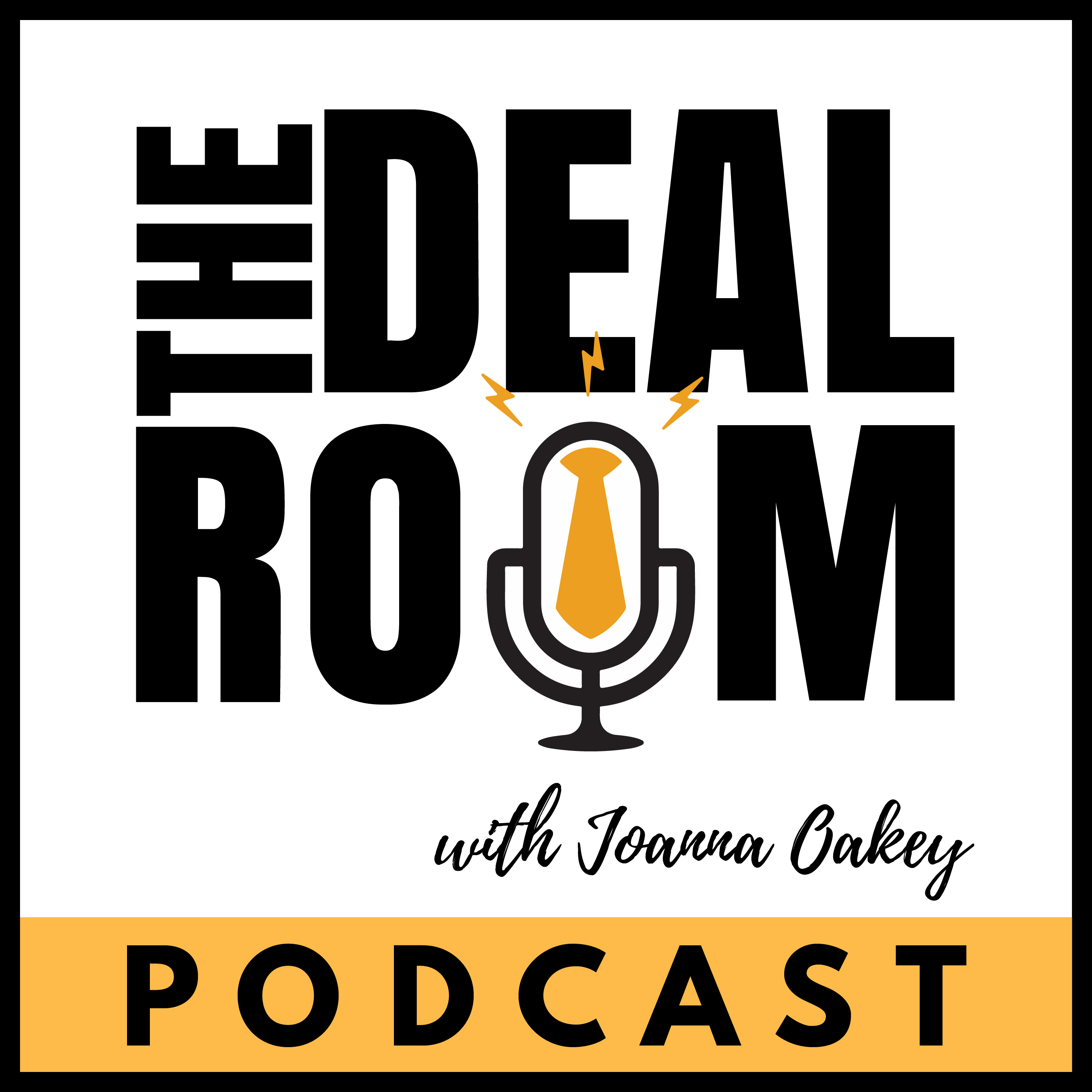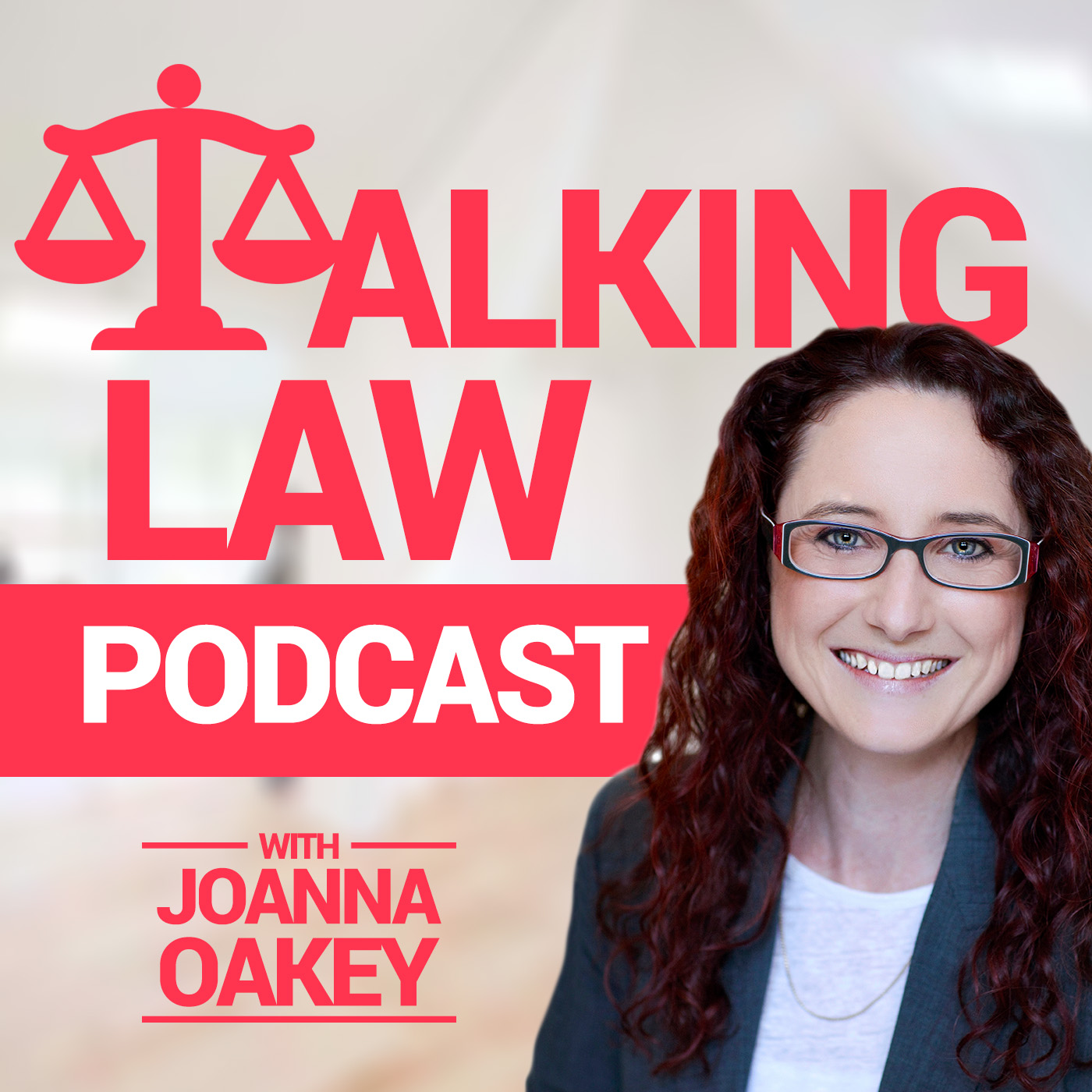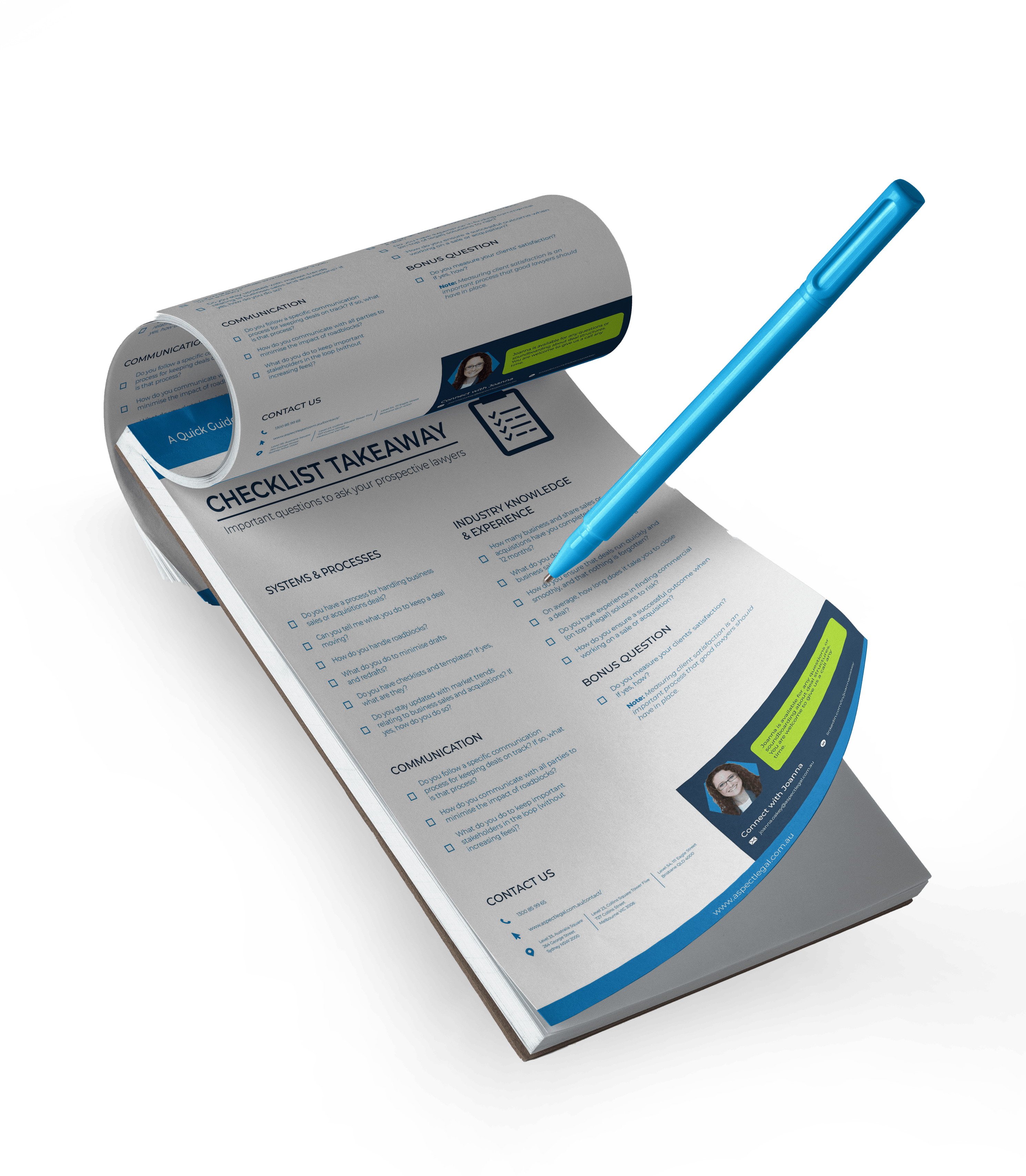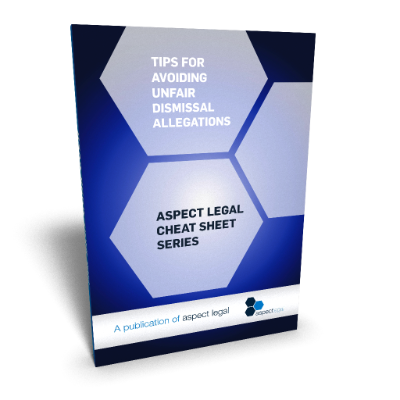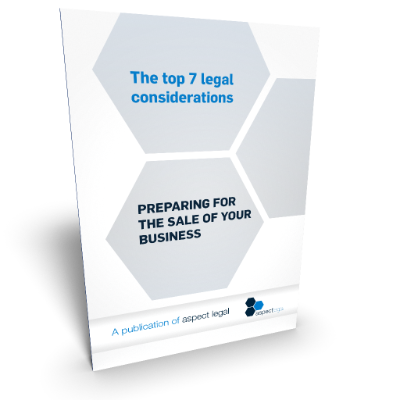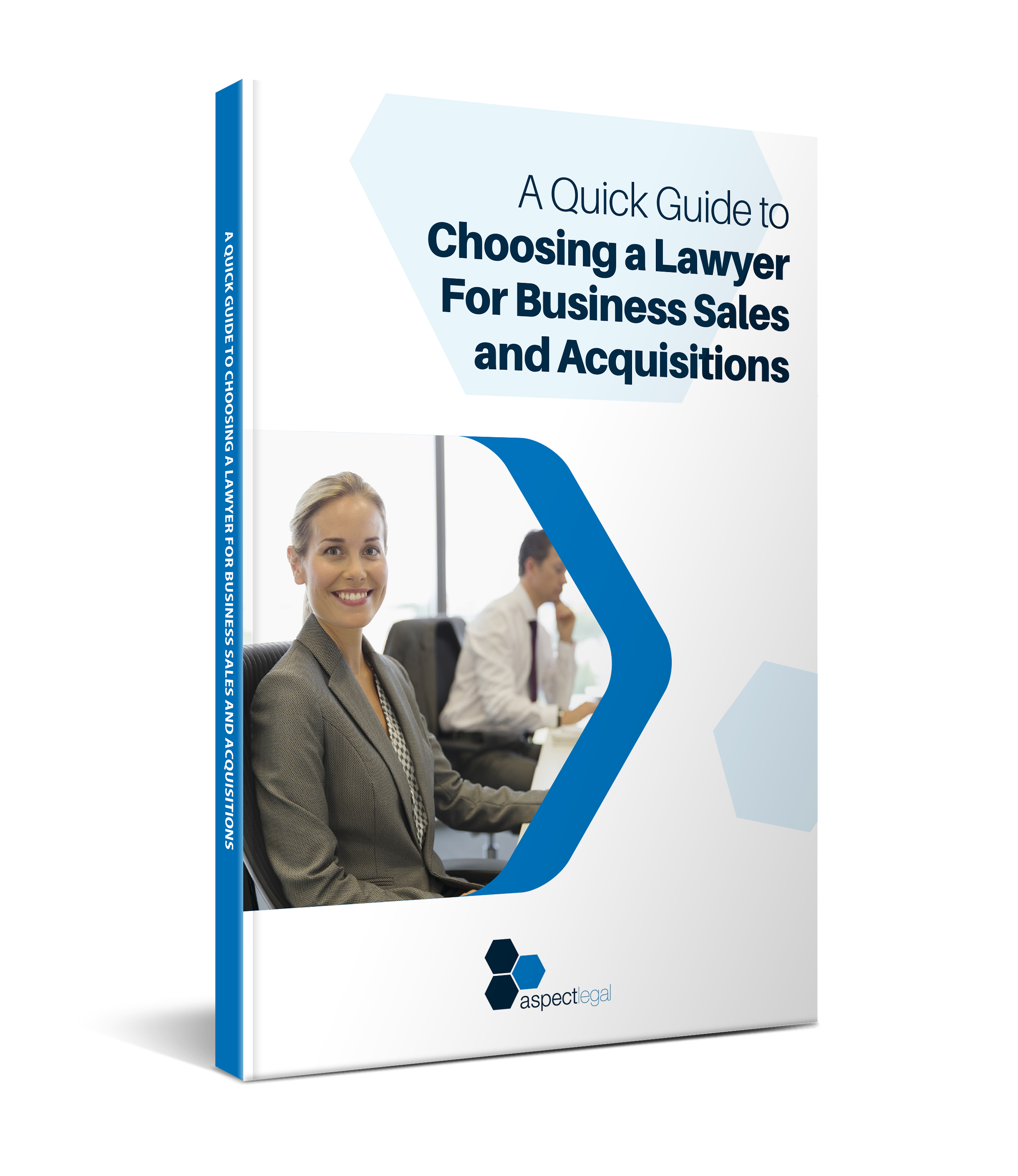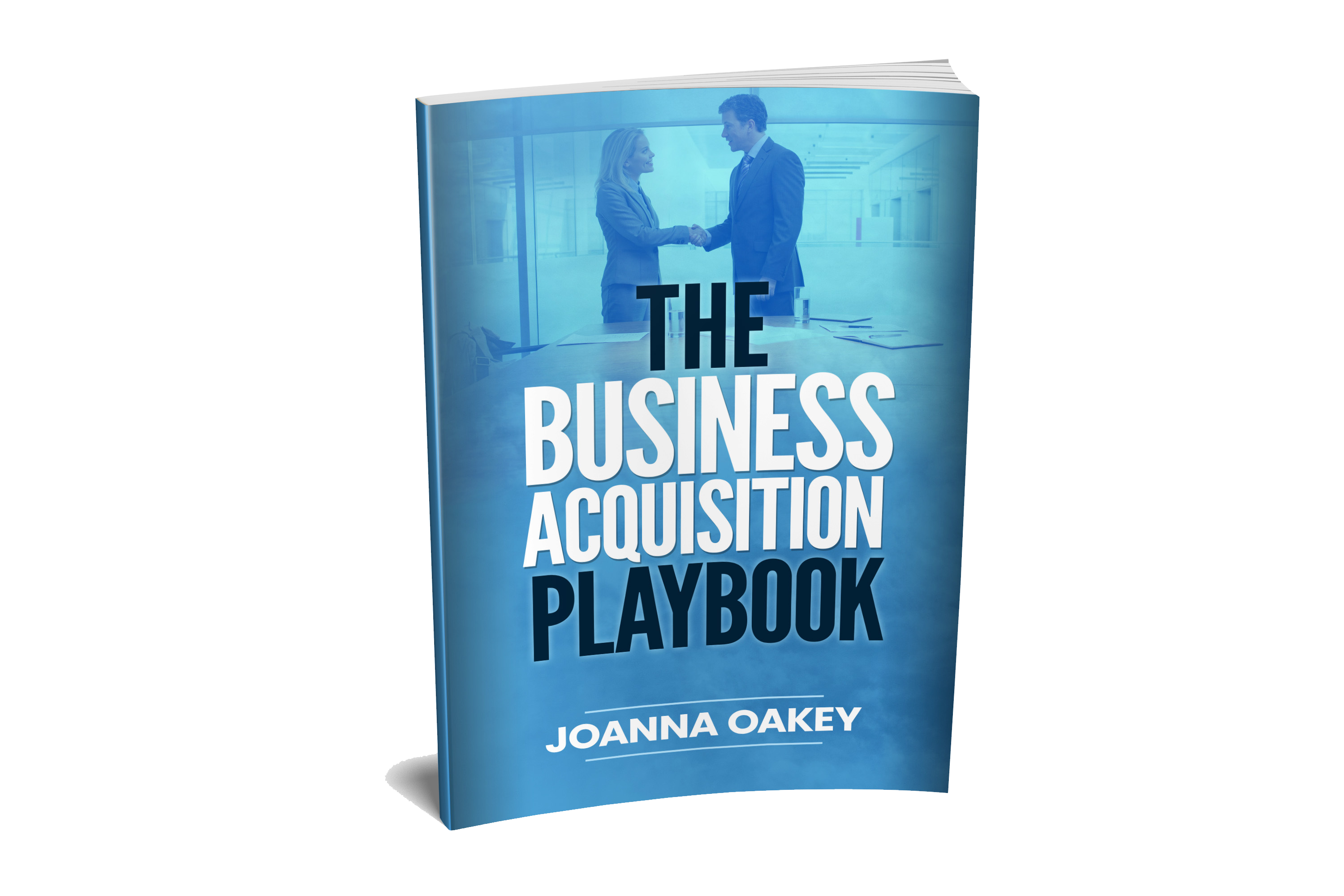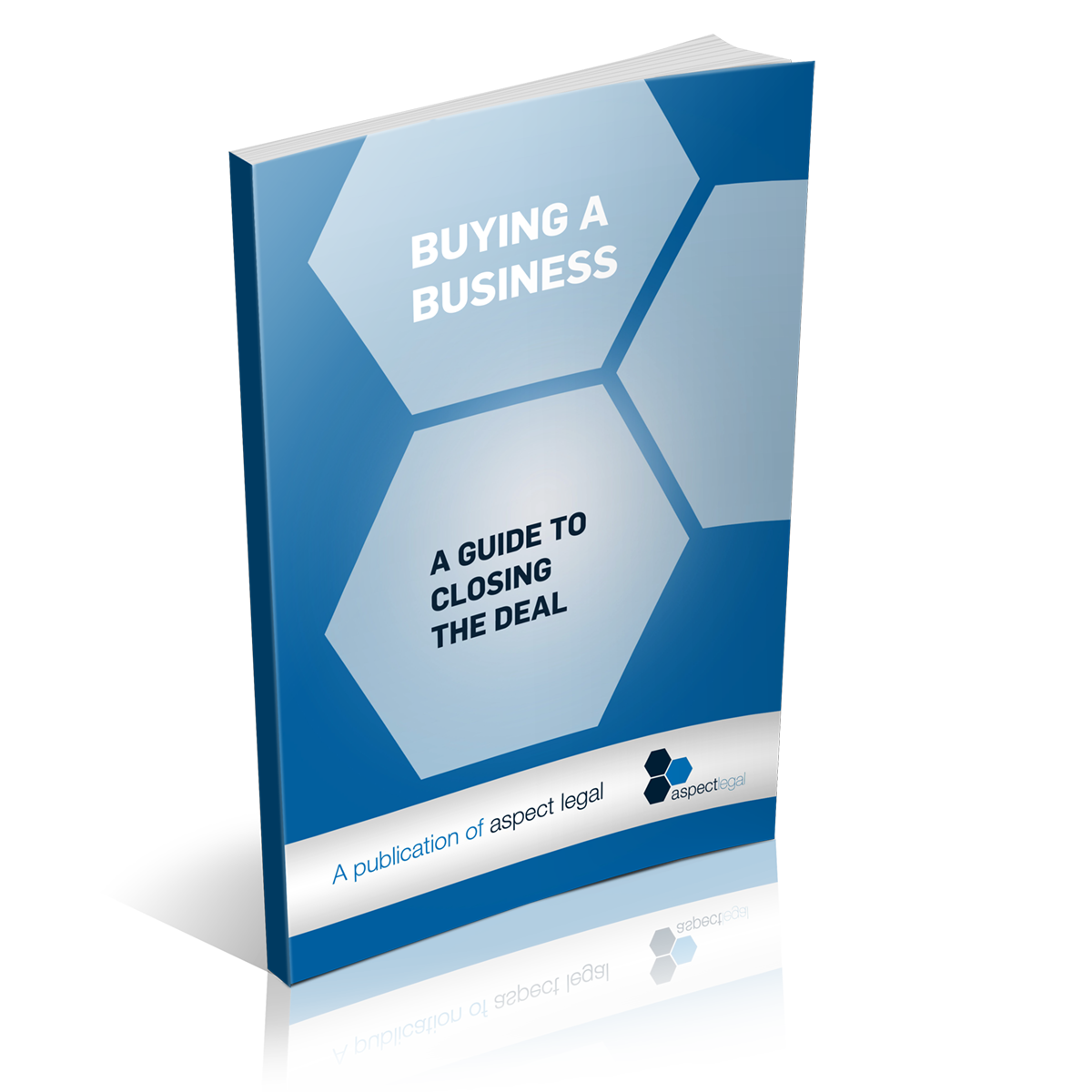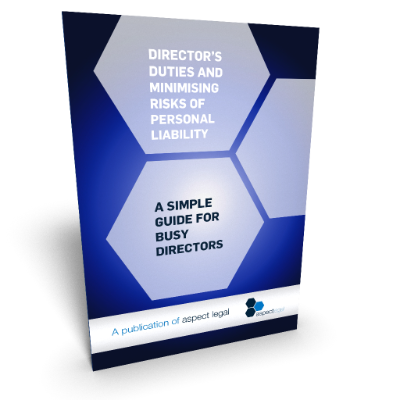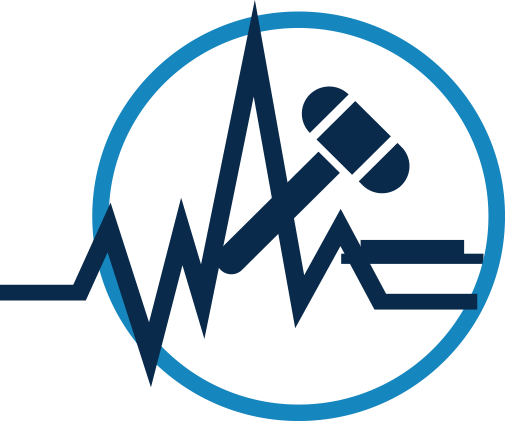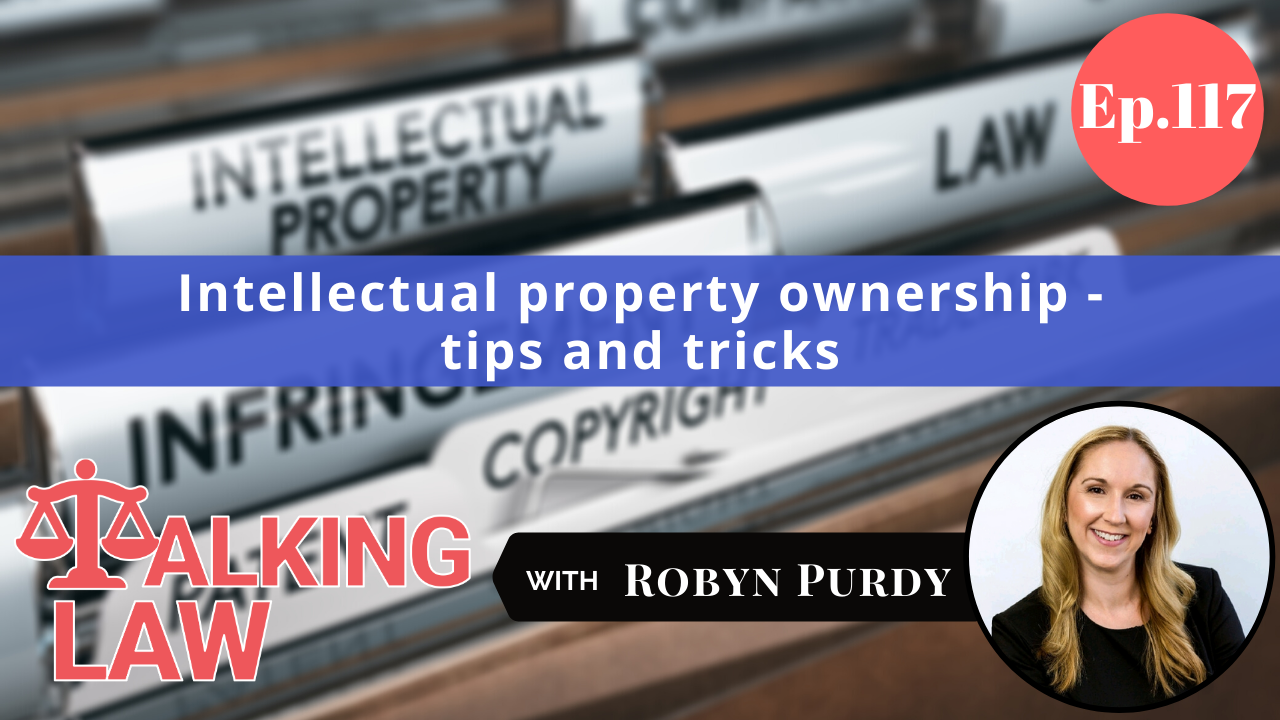
Does intellectual property form a large part of the value in your organisation (or perhaps in an acquisition target you are considering)? In this episode, we talk about tips and traps in IP ownership. And in particular, how to establish who actually owns the intellectual property in your organization.
Joining us today is Aspect Legal’s very own Special Counsel, Robyn Purdy to talk about this important area. Robyn and Joanna discuss intellectual property – including what is chain of title (and how to establish it), the difference in dealing with intangible assets like intellectual property in comparison to physical assets, and what to look out for in understanding and protecting the value of IP within your organisation.

Episode Highlights:
- Some issues we often see when it comes to intellectual property ownership
- Authorship and economic rights
- What is an intellectual property?
- What is meant by chain of title?
- Physical assets and intangible assets
- The preparation process for an IP audit
Connect with Robyn Purdy
Are you enjoying the podcast? Listen to the episode here and leave us a review:
Transcript below!
Note: This has been automatically transcribed so will be full of errors! We are not providing it to you as a word-perfect version of the podcast but just as an easy way to provide you with a different way to be able to scan for components of the podcast that might be relevant to you if you are the kind of person that likes a transcript!
Joanna: Hi, it’s Joanna Oakey here and welcomes back to Talking Law, a podcast proudly brought to you by our commercial legal practice, Aspect Legal. And here on the show today we have the fabulous Robin Purdy from our very own Aspect Legal. Robin, welcome back on the show. I’m sure you’re excited.
Robyn: Thanks, Jo. I love being here, always exciting to do a podcast with you.
Joanna: Oh, don’t lie. Hahaha. I love it.
Joanna: Today we are talking about tips and traps in IP ownership. And in particular, we’re talking about this issue that has come up quite a bit lately, from a number of perspectives, which we’ll discuss, that relate to issues invalidating the chain of title ie who actually owns the intellectual property in your organization, and maybe Robin, you can give us a quick snapshot of some of the issues that you’ve seen, and I’m going to throw in with some issues I’ve seen as well. So we’ll start with maybe what the problem is, and then we’ll get back, then we’ll move backwards and we’ll talk about what intellectual property is and how we work out this whole chain of title thing. But let’s start with some examples. So what problems have you seen on your desk recently Robin?
Robyn: The first thing that we want to talk about when we’re thinking about this chain of title, in light of IP assets, is we’re dealing with really intangible assets. So if you were talking about the chain of title for real estate, for example, it’s very easy to track who was the owner? How do they become the owner? and you can see the historical sequence there. When you’re talking about something intangible like copyright, however, it’s very difficult to be able to put any sort of certainty around who the owner is, if the proper documentation isn’t there to support it. And one of the big problems that we see quite often is where you’ve engaged third parties to create content for you, for example, you might engage a design team to produce some creative content for your website. And you know, in the absence of a really robust contractors agreement that deals with who the actual owner is, you know, the default position is that the contractor would be the owner. And so then if you had a situation where the business owner wanted to sell their business, and you know, part of the sale involved those IP assets, you potentially could have an issue where they’re selling something that they’re not actually the owner of.
Joanna: Yeah, absolutely. And so I think this comes up for us in a number of ways, obviously, we deal with a lot of clients that exit and of course, in the acquisition phase, and this is something that we really looking out for in the due diligence, so that’s the investigation of businesses or companies that are being acquired by our clients, or as I said, acting for our clients we’re exiting, so buyers, you know, want to be sure that where the value in the organization that they’re acquiring, is partly IP or IP as a component of the value of that organization, they’re acquiring, that they have clarity, that the organization actually owns that IP, you know, and that it’s not subject to an infringement action into the future. But it’s not just at exit or acquisition that we thinking about this. It’s also when organizations are bringing on new equity holders, new business partners, when they’re looking for funding, you know, so if they’re after funding, and they have to validate the value of the IP in their balance sheet,
Robyn: Absolutely, it can also arise in situations where they’re considering just internal restructuring. And, you know, they’re looking at creating IP holding entities or, you know, try to engage in some, you know, creation of additional entities for asset protection reasons. And you want to make sure that you’re transferring the IP from the right owner, you know, into the ultimate, the holding company, or you know, where you want it to ultimately land. But for that to be effective, you know, it has to be the actual owner who’s doing the transfer. So aside from the obvious instances in the sale and the acquisitions of businesses, these sorts of considerations about proper ownership of IP assets can just pop its head up in all sorts of environments.
Joanna: Yeah, absolutely. So, working back through some of the issues that we have seen. I think the reality here is quite often when there’s a concern about clarity as to IP ownership. So for example, let’s use some hard examples here. Who actually owns the trademark or the brand name of an organization? Who actually owns the source code that business’s whole website might be built on? And some businesses, you know, the website, the development and the code that’s part of that website are a large part of the value of the organization. You know, obviously, for tech companies, and where else do we see this coming up?
Robyn: Well, we see this arising, in relation to copyright considerations as well, which is, you know, is apart from the source code on the website, but it’s the actual content that sits on the website as well, things like, you know, for photographs, for example, you might have a situation where you’ve engaged a photographer to provide those photographs for you, and you put them on your website. So you know, you sell your website as part of your business sale or whatever the case may be. Those photographs are sitting there, if we haven’t established that you are the actual owner of the photographs, potentially, down the track, the photographer may have a claim therefor intellectual property infringement.

Joanna: Yeah, absolutely. It’s about going back and understanding, I guess, what we really need to do is go back to that point of creation of the intellectual property. And the problem is, sometimes the creation of that intellectual property can be back a long time, you know, it can be back decades, sometimes.
Robyn: And you might have a situation where it was created by somebody who’s now passed, you may have a situation where it was created by an organization that’s been dissolved for some reason. So, it’s like trying to plug the holes in the gaps in chain of title or the ownership problem is not always going to be an easy thing to achieve. Which is why we want to be turning our minds to it as soon as possible when we’re talking about IP creation, to make sure that, you know, we were starting out in the best way possible.
Joanna: Okay, brilliant. So, look, I guess we’ve traversed what the problems are, that we’ve seen on our desks and quite often it’s actually regular basis that we’re dealing with these questions, whether it’s part of due diligence, investigating the value of the assets that are being purchased, whether it’s getting in business ready for exit or dealing with their own due diligence responses, whether it’s preparing a business for growth, whether it’s preparing a business for funding, or just dealing with some internal hostilities within an organization. So for example, with its owners, or its contractors, or people who have developed the IP. So we’ve talked about the problems, maybe let’s go back and establish some of the backgrounds. So firstly, I think I’d like to just traverse what is intellectual property? So what are we talking about here? And what is a chain of title, because I’ve just realized that we’re using this phrase chain of title, and it may not have the same meaning to our listeners as it does to us. So let’s start with intellectual property. What are the things that we’re talking about here? We gave some examples before, but let’s run through it.
Robyn: Typically, when you’re talking about intellectual property, you’re talking about goodwill and your brand. So you think about the things that are making up your brand that could be trademarks, both registered or unregistered trademarks, you’ve obviously got designs, and in some cases, you might have registered patents as well. But we’re also talking about as you sort of referred to website content, the source code. It’s really the intangible assets, things that you can’t physically touch with your hand that we’re thinking of when we’re talking about IP or intellectual property assets.
Joanna: Yeah, brilliant. And I guess one thing to point out with intellectual property, is that the thing with intellectual property is the intangibility of it. This concept of who is the creator is such an important concept that doesn’t come up when we thinking about elements that are real property and physical property. I think it’s also useful if we separate apart the concept of authorship versus economic right. So maybe if you can talk a little bit of it, Robyn. Talk about that distinction in the world of intellectual property between authorship and economic rights?
Robyn: Sure. I mean, I think the best way to probably talk about those is just to illustrate it with some hard examples. When we’re talking about authorship. What we’re really speaking is about the person who’s created it, the actual inventor, the writer of the content, the photographer, really the author of the creative work or the IP in question. And then when you’re talking about economic rights, it’s well who did that author create the work for who’s going to take the benefit in terms of using that creation? So typically, you’re going to get an ad company and they’re creating, you know, an advertisement or some marketing content for you. They’re the creators will the authors of the work that you as the business is the one that’s going to be profiting and gaining the economic benefit of that creative content.
Joanna: But here’s the rub, if you want to hold the economic rights, ie you want to hold the copyright moving forward for the rights to make decisions about the use of the work that’s been created. And the ability to use it in a monopoly way to stop the creative agency here in this example, from going in using components of it with someone else, you need that assigned to you, and what we really investigating when we’re looking at the chain of title, we’ll go back and explain that meaning in a second, what we’re really investigating here is? Where and when did that assignment occur from the author to the person who ultimately holds the copyright the economic rights associated with it? In that sense, that’s what we’re really trying to shore up. And sometimes, there’s a lack of clarity, isn’t there?
Robyn: Yeah, there is. You can have more than one owner as well, it’s not always clear cut, you know, you can have parties collaborating on the creation. And so then it may be a case that there is more than one person or entity that is the proper owner of, of the content, or, you know, you’re looking at something like a website, you think about the various components that make up the website. And you may have copywriters, you may have photographers, and you may be writing the content yourself. And you may be using the intellectual property of a third party on under some sort of licensing arrangement. You know, you’ve engaged software engineers to write source code for you. So you know that there are obviously lots of different components involved there, there’s gonna be lots of different owners of each of those components as well. So the example I gave is really the default position of where we’re starting out. And what we want to do is try and make sure that if we do have a situation where the author is different to the party, that’s going to be deriving the economic benefit, that we want to make sure that we’ve got that assignment in place so that we can say we going forward that the author no longer has the right to use that IP. We don’t want them being able to give that copy to one of our competitors, for example.
Joanna: Hmm, absolutely. So going back, and then let’s also define a chain of title, maybe Robin, if you can sort of let our listeners know what is it that we are talking about,
Robyn: In these instances, not in a statutory definition that we turned to. But when we’re talking about the chain of title, what we’re really thinking is the historical sequence, establishing ownership of the asset from the present owner, back to the original owner. And this can, you know, be thought of as maybe a series of documents or agreements that prove the ownership rights of the asset. So we’re tracing the ownership back to who created it in the beginning, to be able to establish how we own it now.
Joanna: And we were doing some prep work on one of our clients recently. And I think I commented to you that I felt like we’re almost detectives.
Robyn: Absolutely, it starts with a really thorough audit of talking to our clients. So, we’re talking about the website, we want to know, when did it come into existence? How did it come into existence? Whose idea was it? And what happened after you had the idea? Who did you go and speak to? Who helped you? You know, so it’s very much a detective job there when we dive right in and untangle the history of how these things came about. A lot of people have these beautiful logos associated with their business, and how did that logo come into existence?
Joanna: And to be clear, I guess, you know, some people listening to this might say, Well, you know, I don’t know, that just sounds full-on for all of the elements of IP in our business. The point is, what we’re doing here is that we’re seeking to find where is the value in your business? What makes the value in your business now, and if a critical component of that is intellectual property, then it’s important that you can prove the chain of title and prove that your organization is the owner of that value. Those rights. That asset. Maybe if we talk about I guess the difference between physical assets and intangible assets. I guess for physical assets, the reality is the real difference is that when it comes to physical assets, it’s generally fairly easy to trace ownership, right?
Robyn: That’s right. I mean, as I alluded to at the beginning of our chat today, Real Estate’s a really great example. The property. The land. It’s a physical asset, you can go there, you can touch it and you can stand on it. It’s a tangible asset. And there’s paperwork associated with that land, it’s very clear when the plot came into existence if you like, and who the first owner was, and, you know, if you’ve ever even been involved in property sales, you can get some of the very old deeds that are associated with the sale of the property that go back 10, 20, 30 or even 100 years to establish way back when this was the owner and on this date, it was transferred to the next owner. And then following that there was a subsequent transfer, and you can literally see before your eyes how this happened, you know, not so with the intangible assets.
Joanna: Yeah exactly, which is why we’re talking about this. So I guess, with the intangible assets, like copyrights. For example, if you’re looking back to that acquisition example, looking at acquiring rights in an organization, where a lot of the value is in software, for example, then you’ll want to make sure you’re investigating the chain of title of the copyright in relation to that software to ensure that what you’re purchasing has that asset in it, not something that might be exposed, I guess, to being ripped away at some point in the future.
Robyn: Absolutely. I mean, the two big risks there is that you’re paying valuable consideration for something that you’re not ultimately going to be the owner of and that’s essentially just a waste of good money. Secondly, you’re exposing yourself to risk that the true owner is going to come knocking and call that asset back from you. And now you’ve potentially lost money and you’re finding yourself in a situation where you’re engaged in a bitter argument and potential litigation to try and hold on to that asset. Or then to try to recover, you know, from the person who sold it to you in the first place. It is not a happy situation for anybody to be in.
Joanna: And then so then that’s also true. If you think that you might be looking to sell your business at some point in the future and a large component of the value of your organization’s it’s in intellectual property, be aware a buyer is going to be digging into this and going to be wanting to, to clarify from their own perspective that they believe that what they are buying into actually holds the asset that you say it does. And so this is a super important part of the prep for sale. But it needs to be done well in advance, because the longer it’s left, the harder it is to put our detective hats on and unwind the situation. But let’s talk about that Robin, in those instances where intellectual property is important, where we know, there’s a reason why the organization needs to get clear on ensuring that it can validate and establish its chain of title to some third party. Maybe if we can just talk very briefly about the process that we go through.

Robyn: So the first thing that we’re going to be doing is really sitting down with you with our clients and diving into an audit of your assets. What is the intellectual property that we’re talking about here? Where’s the value in the business? What is it that we need to examine? Obviously, we’re going to identify, you know, working with you what those assets are the ones that we need to investigate, look, some of them, there’s not much value attributed to them. So we don’t want to necessarily devote our time to, to digging into those ones. But you know, there is going to be valuable assets for you. So then we’re going to talk to you about you know, how those assets came into creation. Let’s talk about the history of them, who you engaged to help you create them. Was it employees? Was it contractors? And we’re going to want to hopefully start gathering physical evidence, so emails that you might have had to contractors, contractor agreements if you’ve got employees that are creating content. We take a squeeze at your employment agreement, the default position being that employees who have created content in the course of their employment, the owner is deemed to be the employer. But a quick squeeze at the employment agreement to make sure it doesn’t say anything different would be part of that process. From there, once we’ve really dug right into where did the assets come from, who created them who had a hand in them, then we start looking at what’s in place already to prove that ownership and to trace that chain, and then we’re identifying any gaps that might be there. If we do find gaps, hopefully, we don’t, but if we do, that’s when we start looking at how we plug those holes. Is it retrospective assignment agreements and things of that nature?
Joanna: And it might be licensing, you know, and sometimes the reason for all of these might also be setting up licenses into the future as well so it might be prep work for getting, you know, the foundations of intellectual property in the business ready for growth plans that might include licensing. Yeah, absolutely. And so the one thing that I’d like to add for the IP audit perspective, it sounds really involved. And sometimes it is, but sometimes it’s not. So sometimes that whole IP audit process can be quite simple. Sometimes the IP audit process can be complicated if there’s a complicated history, but I promise you, if it’s complicated, now, it will be 10 times more complicated if this has picked up at the time that you’re looking at bringing on board investors, and looking at exiting the business, you’re looking at doing something else that’s critical with the business and you haven’t got it in place, because the earlier you get to this stuff, and get it cleaned up, the easier it is. Longer it’s left, the harder it is to find records, the harder it is to monitor all of this. And let’s be frank, a very large component of organizations that we deal with that haven’t had the proper legal advice in the beginning, will have issues, won’t have the right templates in place won’t have the right assignment clauses in place. And it’s just once this is all set up, then it’s just it’s something that you’ve got the right agreements to use going forward. And it’s about keeping it clean as you grow. Rather than growing on a mess,
Robyn: Absolutely, I completely hit the nail on the head there. And you know, the other consideration is if you’re looking at doing this sort of audit, because you’re considering a sale of your business, and the sooner the better, because you know, as you refer to earlier, a diligent purchaser is going to be making these investigations. And if these problems are uncovered, and we need to try and do remedial work to fix it, potentially going to be holding up the completion of your sale, you know, a purchaser is not going to want to go ahead with this paying any money until they can be assured that all of the documentation is in place. So you know, this is the investigations could potentially take time purchaser could decide to walk away, because it’s just taking too long, and you’ve lost yourself a sale. So the sooner that you turn your mind to these sorts of issues, get the IP audit done, Jo and I very happy to help all of our listeners. Get us involved, we really like to get to know you, we would really like to dive into your business and help you avoid any of these sorts of traps laid out later on down the track.
Joanna: Yeah, brilliant. Okay, and then let’s maybe just touch on a couple of very quick elements before we leave. And I think some things that pop up time and time again, is quite often, there’s a bit of a blurry line for founders when founders have created some of the intellectual property. It can be really unclear whether or not those founders were the author’s themselves with their employees at the time. And so this is a particular comment for, you know, it can relate to prep for the exit, but also, in particular, due diligence, if you are an investor or looking to acquire an organization where IP is a large part of the value. It’s the importance of us going back and ensuring that there are proper assignments from the founder in relation to some of that earlier created intellectual property. Would you agree with that, Robyn?
Robyn: Oh, certainly, Jo. What we’re looking at in that sort of context is, you know, with your startup organizations, quite often, it stems from an idea, it stems from the creator’s idea. And they do a lot of significant development work in the very early stages, just as on their own to try and get the idea off the ground before they start even considering things like incorporating companies and who the ultimate business owner is going to be. And all of that work is done, you know, prior to the establishment of the registration of the companies. And so then if you’re later asserting that no, you actually created it as an employee of the company that in that was your capacity at the time you created it. If we’re talking about stuff that was created before the company even came into existence, that’s not going to hold water. In that instance, we want to make a sure very simple arrangement that we’ve got an assignment from the founder in their own personal right to the company, which is important even if the founder is still the sole director of the company is still the sole shareholder of the company because as we know, companies are legal entities in their own right. So, you know, just putting into place that very basic assignment document, it can be retrospective, so we can refer to the earlier creation of works. And if there’s a question, we can look at doing more of a confirmation type arrangement, and also capture future IP that may be created by the person in their own personal capacity as well.
Joanna: Brilliant. Okay, wonderful. Look, I think we’ve traversed most of the issues. Do you think there’s anything else that we’ve left out? I guess, you know, perhaps one of the other things that we should say is, if you’re in acquisition mode, then these sorts of considerations are relevant, not just for your due diligence, but also in the way that your acquisition contract is drafted. So you know, you just have to make sure that you’re dealing with someone who understands from a legal perspective, how to ensure that the right warranties, are there the right protections for you, as an acquirer are there to ensure that the value in the IP is in fact, within the organization that you’re purchasing and that asset value is there. So I guess that’s one last thing, is there anything else that you wanted to throw in Robyn,
Robyn: I just want to communicate to all of our lovely listeners, don’t be scared by this. I know, it does sound like a very intimidating process. We’ve obviously highlighted some of the really significant traps for people to be aware of, but I just want to say, you know, don’t be intimidated by it. It sounds like a scary process but there is a very good system in place. And Joanna and I are both very experienced in dealing with these sorts of issues. So don’t put it in the too-hard basket, give us a call get in contact with us. And we can help untangle the mess for you. That’s what we do. We’re the problem solvers.
Joanna: I am going to adopt that Robyn. Yes! We are the problem solvers.
Robyn: We are the problem-solvers and so obviously, we want to solve little problems or big problems. So you can come to us before, the little problem grows, and don’t put it in the too-hard basket.
Joanna: Yeah, and I guess just leaving the conversation rounded out, there are a number of critical points for thinking about this. And so if you’re looking to prep for exit, at some point in the future, if IP has a large component or holds a large component of value within your business, or if you are acquiring a business where IP has a substantial component of the value. These are the times when you really need to be thinking about this IP ownership and confirming the chain of title. And as we said, the process is is an IP audit and then and then, you know, fixing the issues that are there if if it’s prepped for exit or if it’s done by the current business owner, or dealing with the sale contract, if it’s some in acquisition mode. Absolutely. That’s it well, Robin, we will make sure we link through to you in our show notes, and you the listener, if you want to head on over to our website, you’ll see a link in the show notes for that and our website you’ll be able to get a transcript if you’re the kind of person that just loves to go through stuff in fine detail
Robyn: Oh, that sounds like me, Jo.
Joanna: Haha. That’s right! Robyn is our details Lawyer. Absolutely. You’ll also be able to book in a free discussion with Robin or any of our other legal Eagles via our website. So make sure you do that if this is a topic that you think is relevant to your organization, your exit or your acquisition and we can have a discussion with you about how this topic might impact you. Well that’s it Robyn, I just want to say a massive thank you today for coming on to the podcast
Robyn: Very welcome Joanna. Always a pleasure.
Joanna: I love it and thank you to you the listener for listening in. You have been listening to Talking Law proudly brought to you by our commercial legal practice Aspect Legal See you next time.
Our General Legal Services
Are you looking for a top quality legal team to assist you in your organisation?
Aspect Legal is an innovative commercial legal practice that specialises in providing fast and professional services for their clients. Our commercial legal services cover a wide spectrum of disciplines – contract law, dispute resolution, business sales and acquisitions, brand protection and IP.
We work with clients both large and small, and we’re all about helping you grow while protecting you from the unexpected storms of business. If you’d like to chat about how we might be able to assist you, simply head over to our website at aspectlegal.com.au to book in time for a free discussion with one of our lawyers. So get in touch today!
Disclaimer: The material contained on this website is provided for general information purposes only and does not constitute legal advice. You should not depend upon any information appearing on this website without seeking legal advice. We do not guarantee that the contents of this website will be accurate, complete or up-to-date. Liability limited by a scheme approved under Professional Standards Legislation.
